[Big read] Hong Kong’s disappearing hawkers: Can they make a comeback?
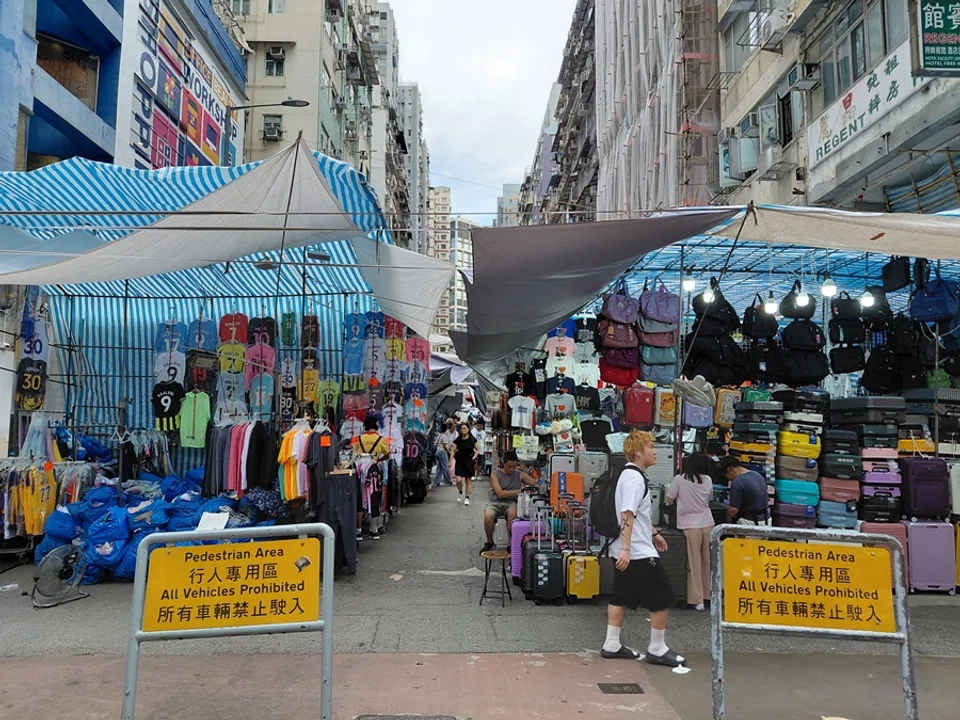
Hong Kong’s traditional hawkers are vanishing due to stricter regulations and changing consumer habits. Can the city revive this fading street culture and preserve its unique urban heritage? Lianhe Zaobao journalist Tai Hing Shing looks into the matter.
Dubbed the “Ladies’ Market of the Central region”, Hong Kong’s Li Yuen Street East in the Central district is only about 40 to 50 metres long. Yet over a dozen street vendors operate there daily, selling a variety of goods.
Among them is the Four Season Shops Embroidered Slippers (四季绣花鞋), located in the middle of the street. Known for selling traditional embroidered footwear, the shop particularly stands out because of its handwritten sign.
Shopkeeper Chan Lam told Lianhe Zaobao that his father started the business in 1972. Chan, then 20, ran the stall alongside his father. After his parents and siblings emigrated, he took over and has been running the business ever since.
The last embroidered shoe shop in Central
Chan said that his embroidered slippers are not mass-produced factory goods sold online, but are crafted with traditional embroidery techniques. The fabrics used are top grade as well, with exceptionally intricate embroidered patterns.
Thus, although the shoes are relatively expensive, the shop has maintained a loyal customer base over the years. Chan shared that many of his customers are wealthy locals from Central, as well as foreign tourists who appreciate traditional Chinese culture.
“A long-time customer who emigrated abroad still made a point to visit when they returned to Hong Kong. They bought over 30 pairs of embroidered shoes in one go as gifts for family and friends,” Chan said.
... times have changed, and interest in embroidered shoes has declined in Hong Kong, with the embroidered footwear industry slowly fading away.
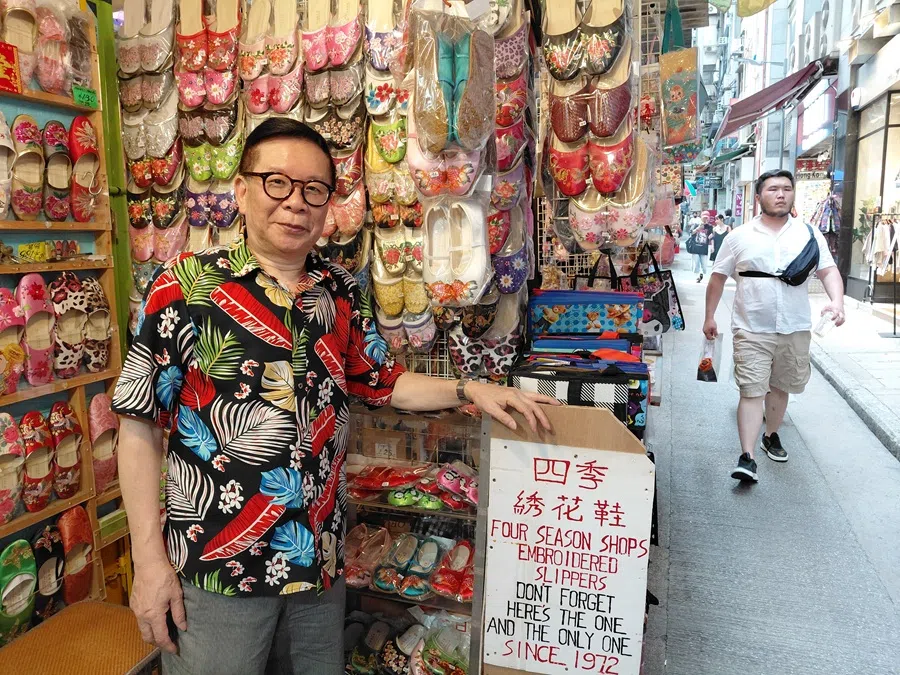
However, times have changed, and interest in embroidered shoes has declined in Hong Kong, with the embroidered footwear industry slowly fading away. Chan’s stall is now the only remaining shop in Central still selling embroidered slippers.
At the same time, the global economic downturn and the impact of the Covid-19 pandemic have also led to a noticeable drop in foreign tourists to Hong Kong, resulting in fewer international customers visiting Chan’s stall.
Chan noted that fortunately, his two children are now grown and have their own careers. These days, he and his wife run the stall mainly to pass the time, and they plan to retire in three to five years. As for the future of his stall, he will just go with the flow.
Hong Kong’s hawker legacy
Street vendors selling seasonal vegetables, salted fish and freshly butchered meat have been a part of Hong Kong life since the city’s founding. After World War II, a large influx of mainland Chinese refugees caused the population to grow rapidly. However, not everyone was able to secure stable employment in the booming city.
To make a living, many turned to street vending, carrying baskets or pushing carts to sell goods on the streets. Over time, hawking became a distinctive part of Hong Kong’s local culture.
Entering the 1970s, Hong Kong faced a series of economic challenges. The stock market crashed in 1973, followed by the oil crisis in 1974, which plunged the city into a recession. Many factories shut down, leading to widespread unemployment.
In response, street vending became a fallback livelihood for the jobless during this transitional period. Even those with regular jobs partnered with friends to rent pushcarts and earn extra income on the side. Hawking thrived during these years, becoming a particularly vibrant part of Hong Kong’s urban landscape.
Last year, there were 3,312 prosecutions of unlicensed hawking cases, averaging roughly 4.5 prosecutions per unlicensed hawker per year.
Regulations and challenges
As the number of street vendors surged, Hong Kong streets became overcrowded. To prevent further chaos, the colonial government introduced a licensing system and designated specific locations for hawkers to operate. They also imposed strict rules on the inheritance and transfer of licences, stipulating that mobile hawker licences could not be transferred, and fixed-pitch hawker licences could only be passed down to immediate family members.
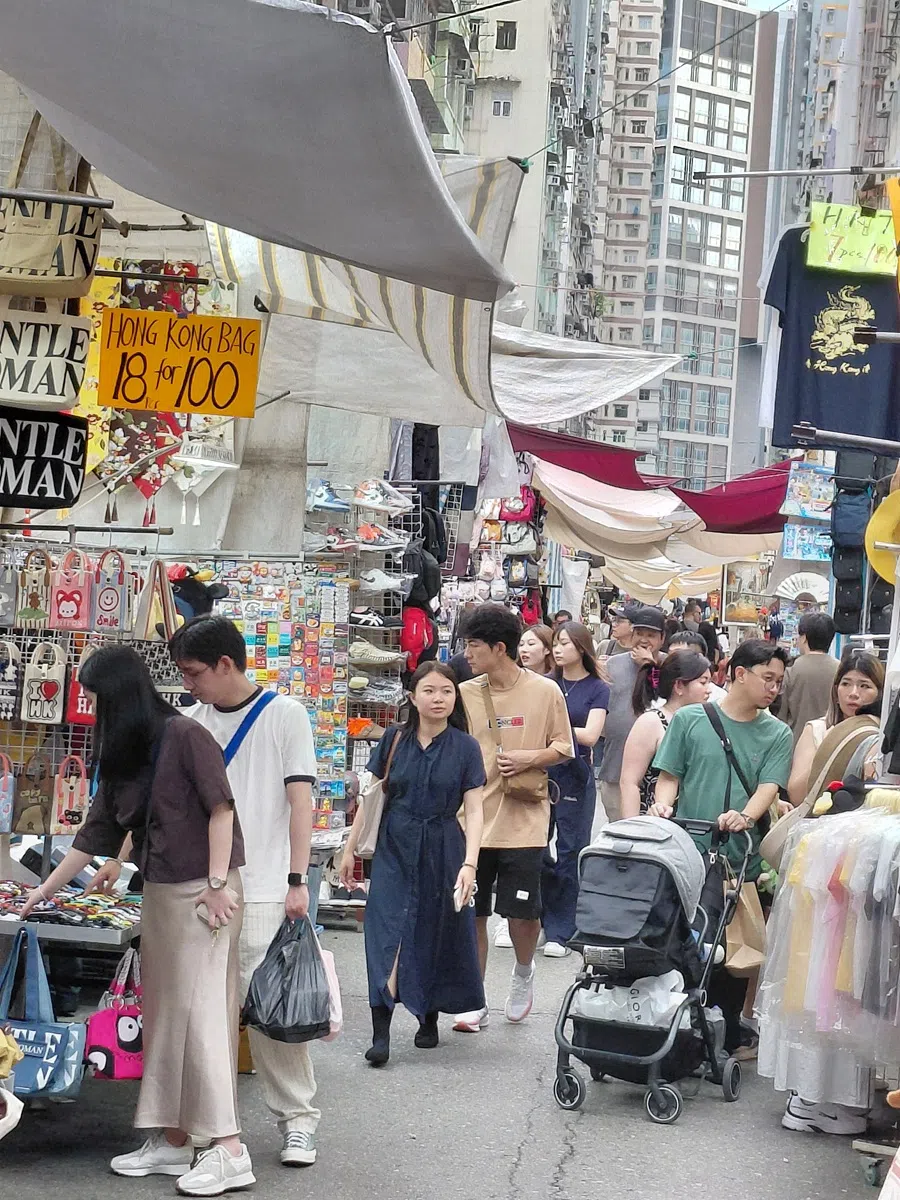
These hawker licensing rules remain in place today. For example, in the case of Chan’s Four Season Shops Embroidered Slippers, if his children choose not to take over after his retirement, the government reclaims the licence — another street vendor would vanish from the streets of Hong Kong.
By the 1980s and 1990s, although street vending continued to contribute to the local economy, the challenges it brought about became increasingly apparent as well.
This included problems such as street blockages and environmental disturbances for nearby residents. Many neighbouring business owners also complained that the hawkers did not have to pay rent, bringing unfair competition to their businesses.
In 2002, the Hong Kong government introduced a new policy to encourage hawkers to voluntarily surrender their licenses. The government would then provide a special grant to help hawkers relocate to housing estate markets or commercial areas, in turn reducing street hawking.
At the same time, authorities enforced strict measures to combat illegal hawking. The Hawker Control Team of Hong Kong’s Food and Environmental Hygiene Department conducts routine and random patrols at 45 hawker blackspots across the city’s 18 districts.
As of the end of September 2024, 73% of licensed fixed-pitch hawkers were aged 60 or above, with those under 40 accounting for just 3%.
Hawkers in crisis: a fading tradition
A report titled “Statistical Highlights: Hawker Control in Hong Kong” released by the Research Office of the Legislative Council Secretariat on 30 June this year showed that the Hawker Control Team conducted 85,445 surprise operations last year to combat illegal hawking activities, averaging 234 operations per day. Last year, there were 3,312 prosecutions of unlicensed hawking cases, averaging roughly 4.5 prosecutions per unlicensed hawker per year.
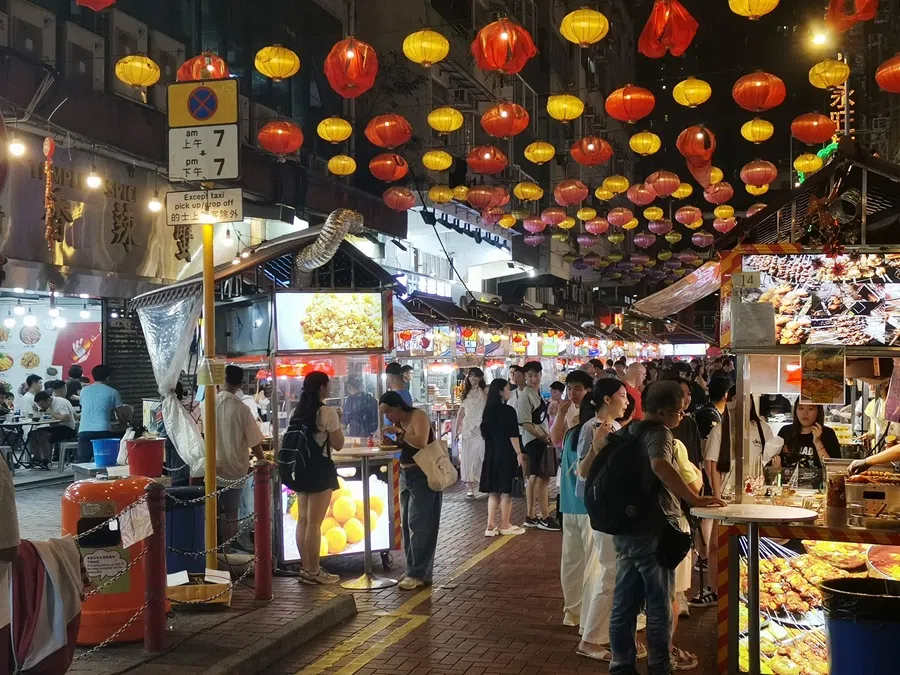
Under the strict law enforcement, the number of unlicensed hawkers in Hong Kong significantly decreased by 84% over the past 24 years, with just 698 recorded last year. The number of licensed fixed-pitch hawkers has also decreased by 40% over the past 24 years, leaving 4,848 last year. During the same period, the number of mobile hawkers has plummeted by 80% to 233.
The report also pointed out that, in addition to the dwindling number of hawkers, the hawker industry in Hong Kong is also ageing. As of the end of September 2024, 73% of licensed fixed-pitch hawkers were aged 60 or above, with those under 40 accounting for just 3%. The ageing problem is even more severe among mobile hawkers, with 90% over 60, and only 0.8% under 40.
Newspaper stands, with over 100 years of history, are an important part of Hong Kong’s street culture. At its peak, there were more than 3,000 newspaper stands across the city.
Hawkers need both: change and support
The Federation of Hong Kong Kowloon New Territories Hawker Associations, established in 1986, has over 100 members mainly from street markets such as Temple Street and Ladies’ Market, as well as market vendors.
The association’s president, Raymond Chan, told Lianhe Zaobao that among the various vendor industries, newspaper vendors are struggling the most. Newspaper stands, with over 100 years of history, are an important part of Hong Kong’s street culture. At its peak, there were more than 3,000 newspaper stands across the city. With the rise of internet media and changes to reading habits, only about 100 such stands remain in Hong Kong — newspaper stands face the threat of being phased out over time.
Chan, who is also the chair of the Yau Ma Tei Temple Street Association of Hawkers and Shop Operators, believed that most of the current license holders or operators of hawker stalls in Hong Kong tend to be older, and the products they sell are often similar and lack uniqueness, which makes it difficult to attract tourists.
He cited an example where the association once successfully lobbied for Temple Street vendors to sell packaged foods in addition to dry goods, but only one stall applied to do so in the end.
“The government has not adopted a policy of suppression towards hawkers, but it does not provide support either, leaving them to fend for themselves...” — Raymond Chan, President, Federation of Hong Kong Kowloon New Territories Hawker Associations
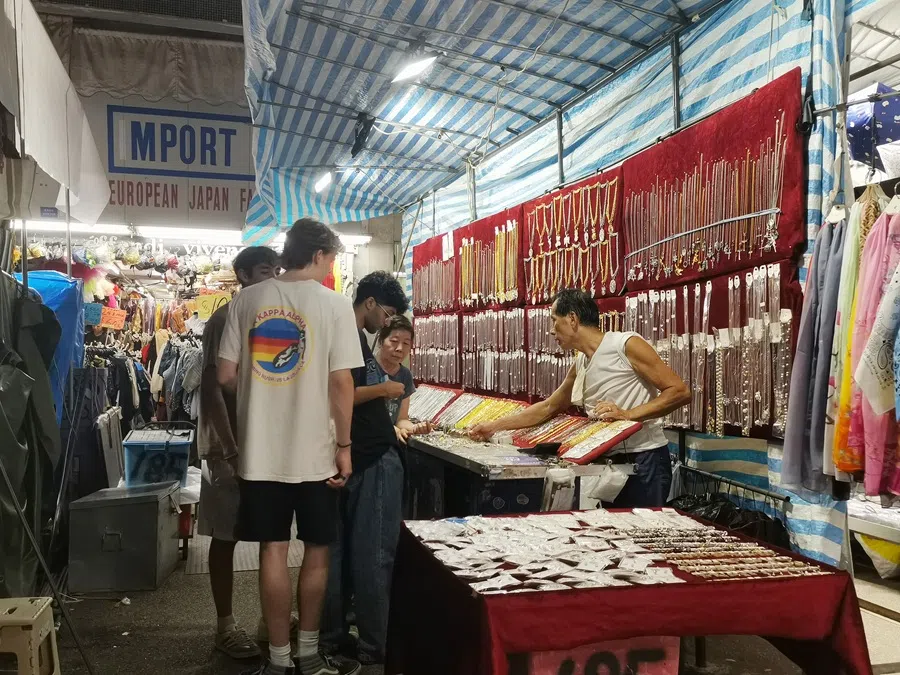
Chan said that the change in shopping patterns in recent years, the emergence of online shopping and food delivery and the trend of Hong Kong residents heading up to mainland China to spend have all contributed to the dwindling survival space for hawkers. He felt that hawkers need to adapt, change their set thinking and create their own unique selling points to stand out.
“The government has not adopted a policy of suppression towards hawkers, but it does not provide support either, leaving them to fend for themselves. Since hawkers greatly contribute to promoting tourism in Hong Kong, the authorities should proactively assist in formulating short- or long-term hawker policies, providing support from a tourism and cultural heritage perspective, and not simply leave it solely in the hands of the Food and Environmental Hygiene Department,” Chan lamented.
He argued that the government should set a certain time period that gives the assistants or partners of hawkers the rights to inherit the hawker licenses. It should also take reference from Singapore’s hawker training programmes, and train newcomers interested in joining the industry on the operating knowhow — including where to source goods and how to stay on top of market trends and move with the times.
Hawker culture revitalisation in a changed city
Besides playing an important role in Hong Kong’s economic development, the hawker industry has also left a deep mark on local history and culture, and has become one of the city’s major tourist attractions.
Take Ladies’ Market and Temple Street for example. Since 2005, they have consistently ranked among Hong Kong’s top ten tourist spots, with Ladies’ Market even reaching fourth place last year. In the past, the market bustled with crowds every day, as both locals and tourists flocked there to buy affordable daily goods or souvenirs, making it a once hugely popular destination.
... Eating from street hawkers was completely normal, and the most important factor was affordability. But by the 21st century, Hong Kong’s economic environment had changed significantly. The decline of hawkers can’t be blamed solely on the government. — Gordon Fan, Lecturer, a Hong Kong tertiary institution
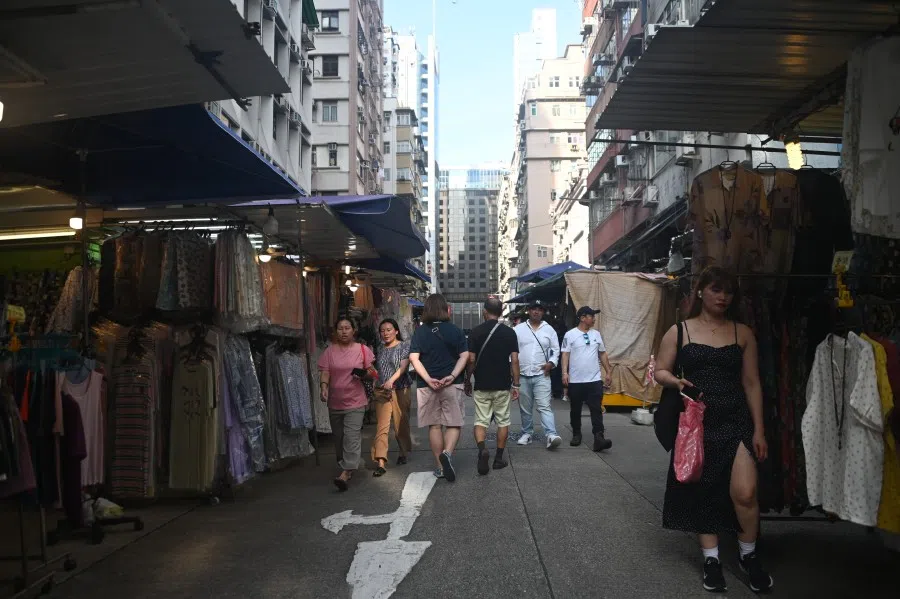
However, in recent years, the Hong Kong economy has been hit hard by the pandemic, and Ladies’ Market has seen a sharp decline. When I went there recently, it was no longer packed, while elsewhere in the city, there are a lot fewer authentic street stalls.
Gordon Fan, a lecturer at a Hong Kong tertiary institution, said that hawkers have gradually disappeared from the city due to two main reasons: the government tightening its licensing system and a shift in the city’s economic model. At the same time, consumers have become more concerned about food hygiene and brand appeal when shopping.
He said, “In the 1950s and 1960s, Hong Kong was in the midst of post-war recovery, and even securing two meals a day wasn’t easy. Few people cared about the healthiness of food. Eating from street hawkers was completely normal, and the most important factor was affordability. But by the 21st century, Hong Kong’s economic environment had changed significantly. The decline of hawkers can’t be blamed solely on the government.”
Fan gave an example from his own experience working in the northern New Territories. When he passed by Sheung Shui and Fanling railway stations on late nights, there would be crowds of people surrounding several food stalls. Many people ended work late, and it was convenient to grab a bite immediately outside the station. There was a wide variety of choices and prices were low, making the area very lively. However, these food stalls also triggered complaints from nearby residents, who said they affected hygiene and congested walkways. After the authorities cracked down on them, the two footbridges near Sheung Shui and Fanling stations have become quiet.
Not just shopping malls: making space for hawker culture
Fan believes that in the past, Hong Kong’s hawker economy supported many families, but times have changed, and very few Hong Kongers still rely on hawking as their main livelihood.
Nevertheless, he also pointed out that in recent years, tourist spending patterns have shifted away from the “shopping spree” model, where visitors would buy a lot of goods at once. Instead, many tourists now prefer to experience local history and culture and to purchase products with a distinctly local flavour, making the uniqueness of hawker stalls a key attraction for visitors to Hong Kong.
He said, “Since tourists want to see the return of Hong Kong’s traditional hawker stalls, to try various local snacks and shop for all kinds of souvenirs, the government should make a serious effort to revive hawker culture.”
He added that in recent years, he has frequently travelled to mainland China and noticed that many communities there have designated areas for hawkers to operate. These zones do not disrupt residents’ daily lives and, in fact, attract both locals and tourists, boosting the local economy. He suggested that the Hong Kong government could consider adopting a similar approach.
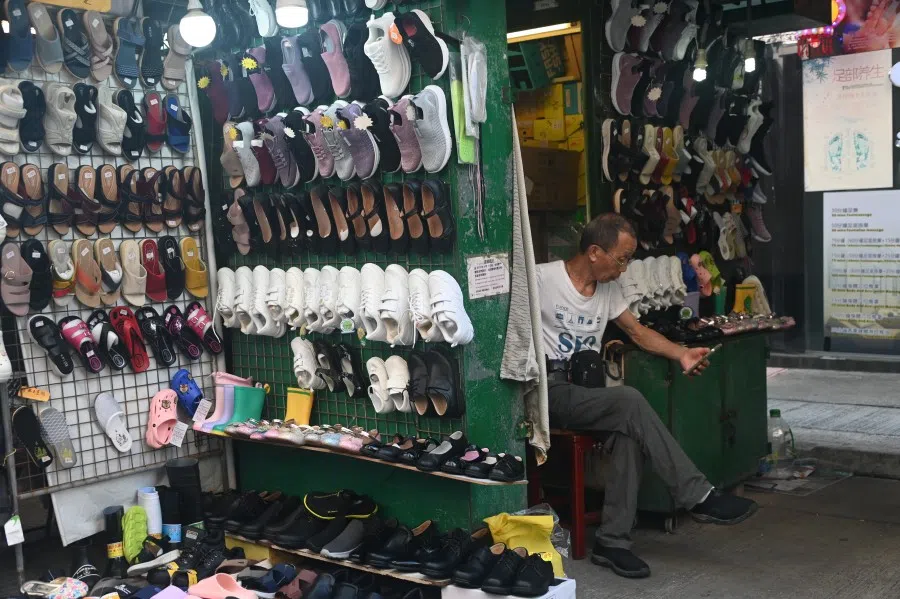
Henry Choi, a lecturer with the General Education faculty of The Chinese University of Hong Kong (CUHK), said that the Food and Environmental Hygiene Department currently manages hawkers purely from a municipal administration perspective, aiming to curb the expansion of the trade. He argued that the government should reestablish a new licensing system for hawkers.
“... reviving the hawker trade in Hong Kong is about breaking the monotonous sameness of shopping malls that has prevailed for years. It allows both residents and tourists to rediscover a diverse range of consumption and cultural experiences across different districts.” — Henry Choi, Lecturer, General Education faculty, CUHK
He noted that looking back at Hong Kong’s history, during the oil crisis of the 1970s, Nathan Road was lined with mobile hawkers, a symbol of the city’s grassroots economic resilience. However, today, Hong Kong should not focus solely on the economic value of hawkers and fixed stalls. Instead, there needs to be a broader review of hawker policy from the standpoint of revitalising urban cultural ambiance and preserving traditional cultural values.
“To put it simply, reviving the hawker trade in Hong Kong is about breaking the monotonous sameness of shopping malls that has prevailed for years. It allows both residents and tourists to rediscover a diverse range of consumption and cultural experiences across different districts,” he added.
Choi cited the carnival-style events held in recent years at Victoria Park, such as the Brands and Products Shopping Festival, as examples of initiatives that can continue. However, he also stressed the need for more flexible policies that allow for distinctive hawker stalls at designated street corners, providing attractive spots for tourists to explore and photograph. “With careful planning, there would be no shortage of returning visitors,” he said.
This article was first published in Lianhe Zaobao as “牌照难传人渐老去 香港小贩行业余温扛得过时代降温吗?”.





